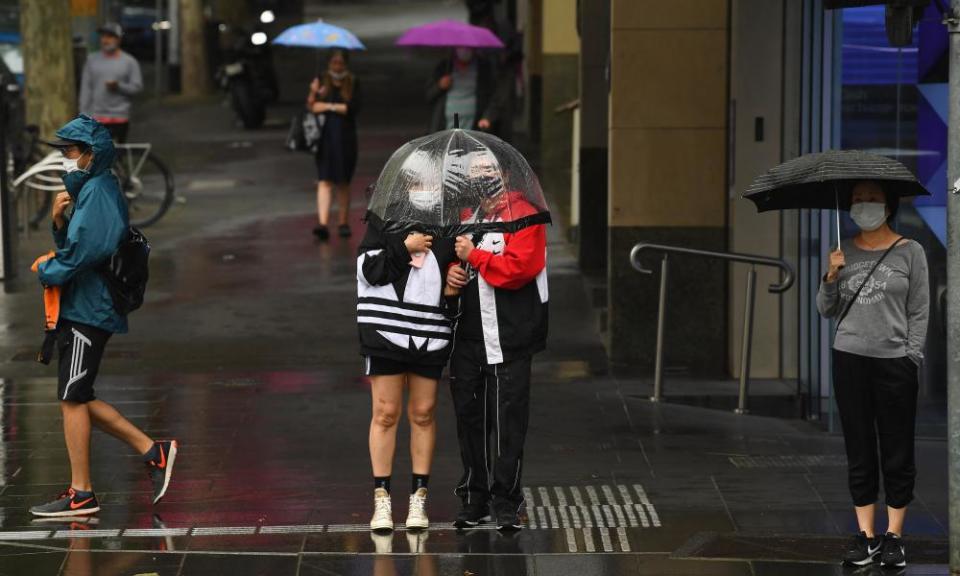BoM outlook warns eastern Australia could face flooding in wetter-than-average summer

Large parts of eastern Australia could be at risk of flooding in what is expected to be a wetter-than-average summer.
The Bureau of Meteorology has released its annual summer climate outlook, forecasting above-average daytime temperatures across parts of south-east and far-west Australia, as well as along the northern coastline.
The outlook also forecasts above-average rainfall, especially across the east coast, as an active La Niña event continues to affect the weather.
Dr Andrew Watkins, the bureau’s head of operational climate services, said the La Niña event meant the east coast could expect a deluge come summer.
“New South Wales, Victoria and Queensland are expected to see above average rainfall, meaning we face an increased risk of widespread floods.”
Related: Australia weather: temperatures to soar to high 40s as weekend heatwave grips south-east
The bureau’s modelling forecasts the La Niña event will likely peak around December or January, and persist until February.
La Niña occurs every few years, and is a result of variations in ocean temperatures in the Pacific.
The increased rain likely won’t relieve long-term rainfall deficits in some southern parts of Australia. Watkins also highlighted that the risk of bushfires and grassfires is still high.
“There’s a great chance of grassfires in some areas as recent rain and warm weather have led to vigorous vegetation growth. South-eastern Australia is one of the most fire-prone regions in the world. Even short periods of hot and dry weather increase the risk of fire in summer.”
He also said that although the bureau didn’t expect temperatures to reach the extreme highs of recent years, it was still advising communities to be prepared for heatwaves in the coming months.
“Every summer we see heatwaves across southern Australia. This summer, heatwaves may not reach the extreme temperatures of recent years, but may be longer-duration and more humid, which can still have a significant impact on human health.”
NSW and the ACT are in for a heatwave this coming weekend.
Conditions are expected to reach the “severe” category in some locations, where day and nighttime temperatures are expected to be 10C to 16C above average for this time of year.
Helen Reid, a meteorologist at the bureau, said the conditions would also increase the fire risk significantly.
“It is that hot, dry summer feel. The dryness is coming from that continental inland Australian air, and it’ll also be quite windy, so we are keeping a close eye on fire dangers.”
Reid advised that people across the east coast needed to be mindful of outdoor activities across the weekend, and to keep sunscreen and a bottle of water handy.
Northern Australia is still on track for a slightly above average cyclone season. Watkins noted that Australia usually had between nine and 11 tropical cyclones a year, with four expected to cross the coast.
“People in the north of the country should prepare for tropical cyclones now. And don’t forget tropical lows, which can bring heavy rainfall, flooding and cause significant property damage.”

 Yahoo Finance
Yahoo Finance 